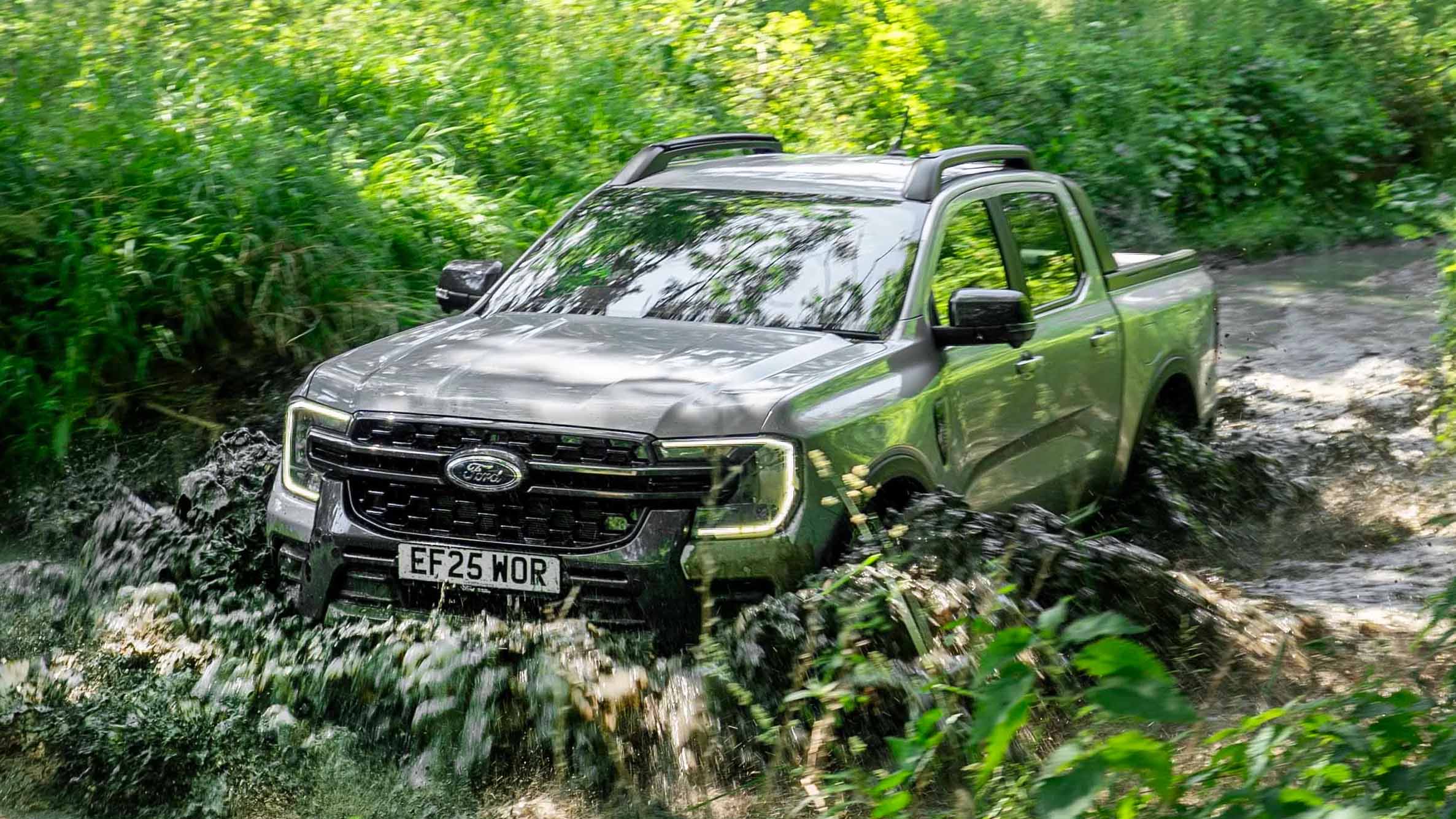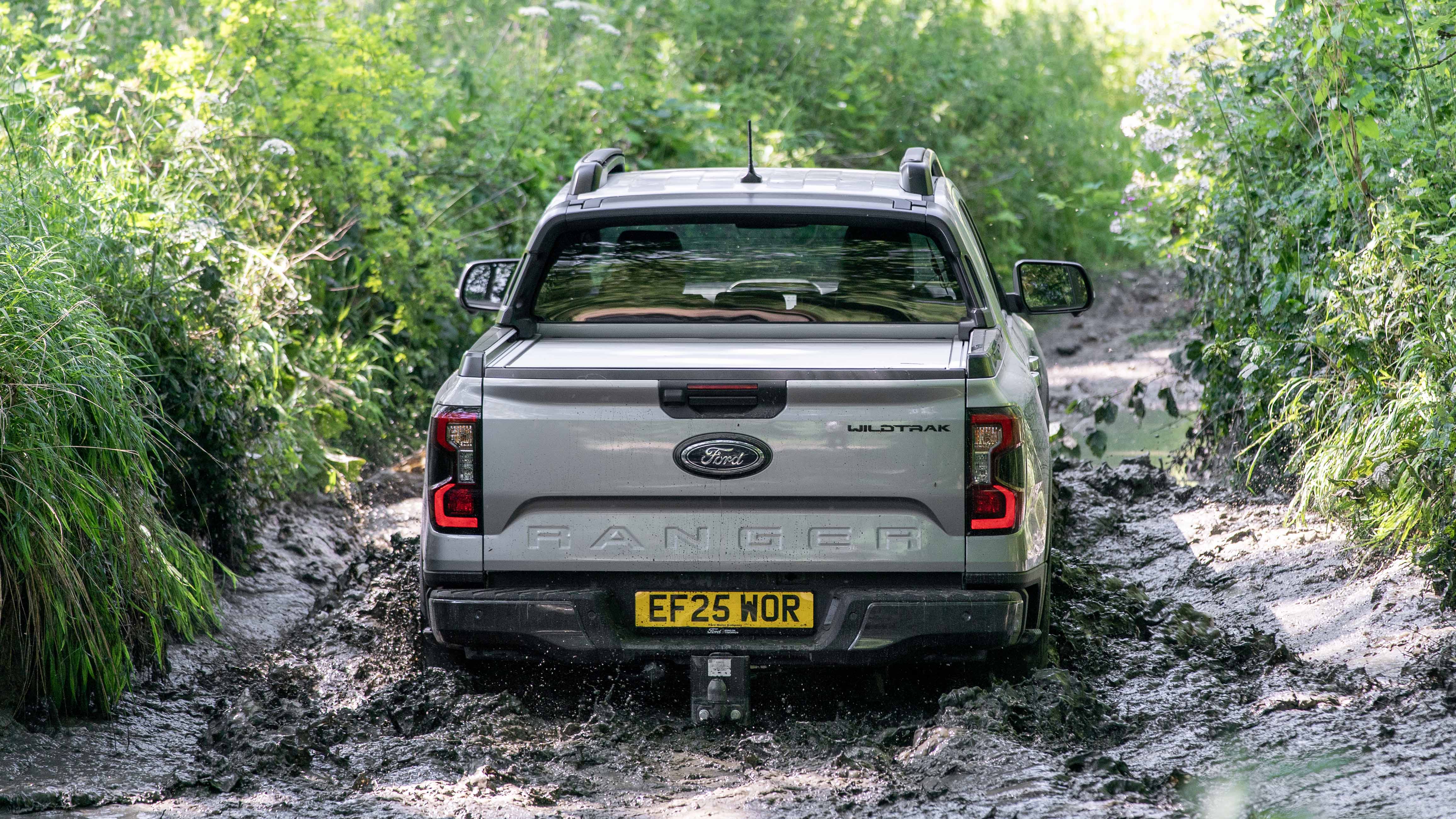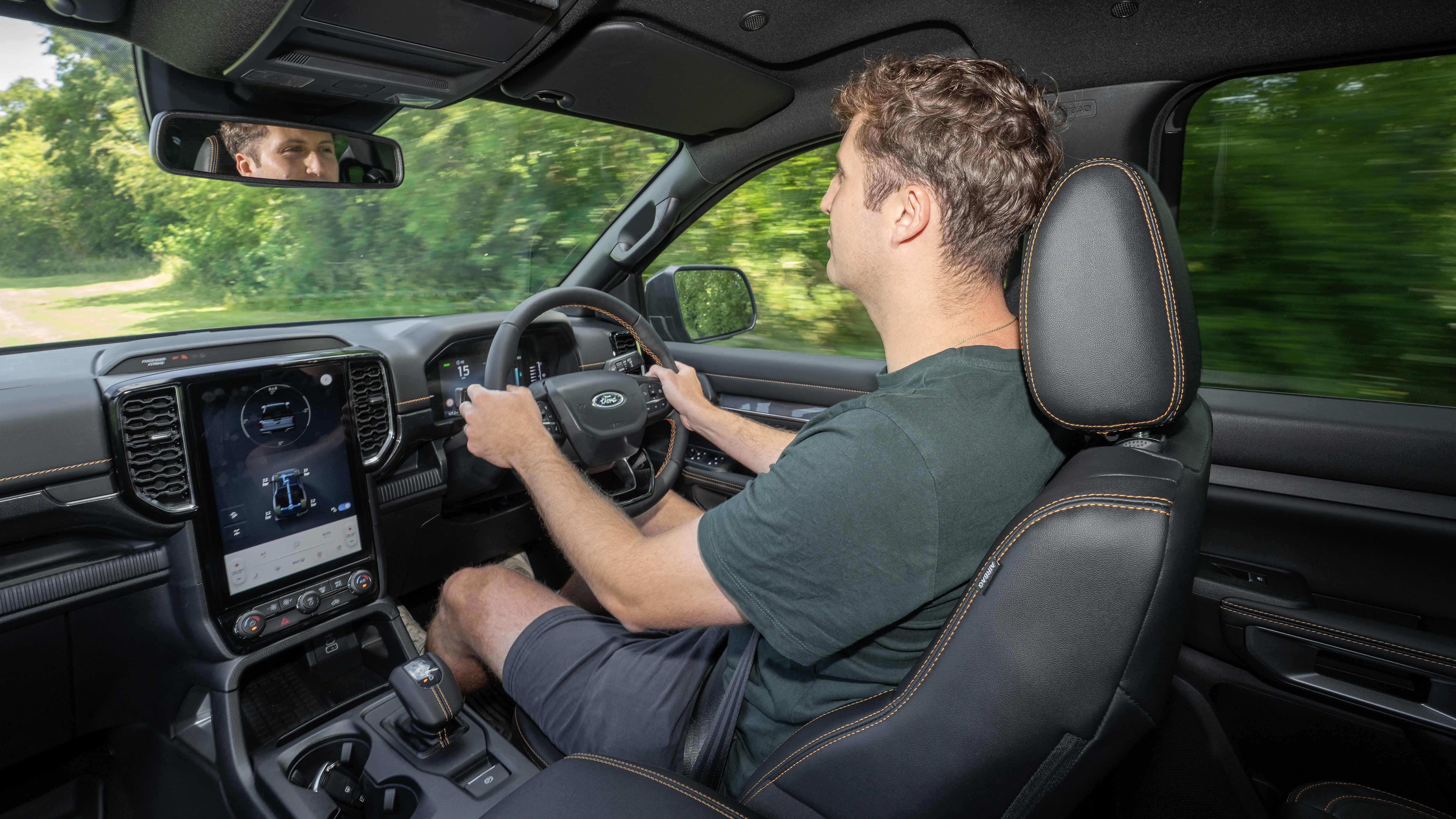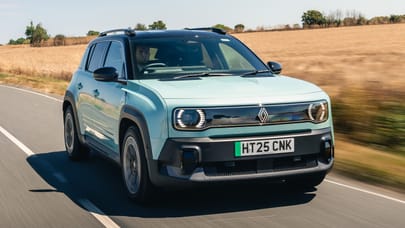
Ford Ranger review
Driving
What is it like to drive?
A reminder, then: in diesel form the Ford Ranger is available with the choice of two 2.0-litre turbodiesels, plus a 3.0-litre twin-turbo V6. The entry model gets 168bhp and 299lb ft of torque and a six-speed manual gearbox, the upper-powered version 202bhp and 369lb ft, and the twin-turbo V6 237bhp and 333lb ft, both mated to a 10-speed auto box.
Zero to 62mph pickup times matter little, but you’re looking at 11.6 seconds, 10.5s and 8.7s respectively as you move up the range. The V6 we tried felt perky enough when travelling light – and we doubt you’re going to be flooring it fully loaded.
Done with the numbers yet?
For now. The first thing that strikes you when you get in is the hugely commanding driving position: you really do tower above everyone else in this. Below lorry drivers but somewhere around the same height as bus drivers. It's an addictive place to sit. Prod the start/stop button and the instrument cluster cuts to a Ranger graphic together with the words ‘BUILT TOUGH’. In case you weren’t already aware.
Still, it handles any on-road stuff with aplomb. The steering is light and disguises the weight well, and while it’s best to be gentle with the throttle to avoid any jerkiness, it’s pleasingly tidy around town. Threading your way around narrow streets can be terrifying due to the Ranger's sheer size, but the reversing camera and sensors are a godsend when it comes to parking. We did find the gear shifter a little fiddly when switching between D and R, mind.
We tried the self-parking in the top-spec car which was a white knuckle experience. It worked fine, but parking a little far from the kerb for our high standards. You haven't got the luxury of giving yourself a wide berth in something this huge.
For heading off the beaten track, there are two- and four-wheel-drive modes with low and high range options, a new ‘set and forget’ mode that automatically switches between the two when required, and selectable off-road driving modes that optimise the set-up depending on the terrain you’re on. Plus you’ve got a locking rear diff, so you’ve really no more excuses for getting stuck in the mud.
Dare we ask about fuel economy?
Ah, yes. Ford claims (sorry, more numbers coming up) between 27.4 and 33.2mpg for the four-pots and 28mpg for the V6, but in our experience we averaged a rather sorry 20.2 miles per gallon in the latter. Regular longer distance runs might result in a slight improvement, but it ain’t going to be cheap to run.
This is where the PHEV comes in, surely?
Absolutely. To recap, the plug-in hybrid Ranger pairs a 2.3-litre four-cylinder petrol engine with a 10-speed auto gearbox, an electric motor integrated into the bellhousing and an 11.8kWh battery.
Any difference in the way the hybrid drives?
The addition of a battery and other electrical gubbins means the PHEV tips the scales at just over 2.5 tonnes. Yikes. In fact, the hybrid is around 300kg heavier than the diesel Ranger, so Ford has beefed up the suspension and when unladen the ride is quite firm and fidgety.
The brakes can be slightly grabby too as it balances regen and friction braking, but the steering is still pleasant, and the auto gearbox is smooth. The PHEV will run in all-electric mode for 27 miles, reckons Ford, and you’re able to select a mode to go EV-only, petrol-only or petrol-charging-electric. You can also leave it in auto and let the car decide, and if you do, you’ll find a strong wave of torque and impressive acceleration when required.
The engine itself – which initially kicks in without too much fuss – is actually from the old Focus RS or four-pot Mustangs, and it can get a little noisy when asked to work hard, but this thing still gets a payload of almost a tonne and can tow 3.5 tonnes. Oh, and there’s a great bit of turbo whoosh at times too.
How efficient is the PHEV?
On a short on-road drive using a mix of roads and modes, we saw a very impressive 35.9mpg. Ford also reckons that the hybrid is more efficient to run than the 3.0-litre diesel even without regular charging, so combined with the tax breaks this should be much cheaper to operate even if you never plug it in.
It’ll also do the off-road stuff just as well as the diesels, with an 800mm wading depth, a locking rear diff, low range gearbox and all the same off-road modes. Even on road tyres we found it able to stroll through some fairly serious rough stuff.
Variants We Have Tested
Trending this week
- Car Review
BMW iX3








